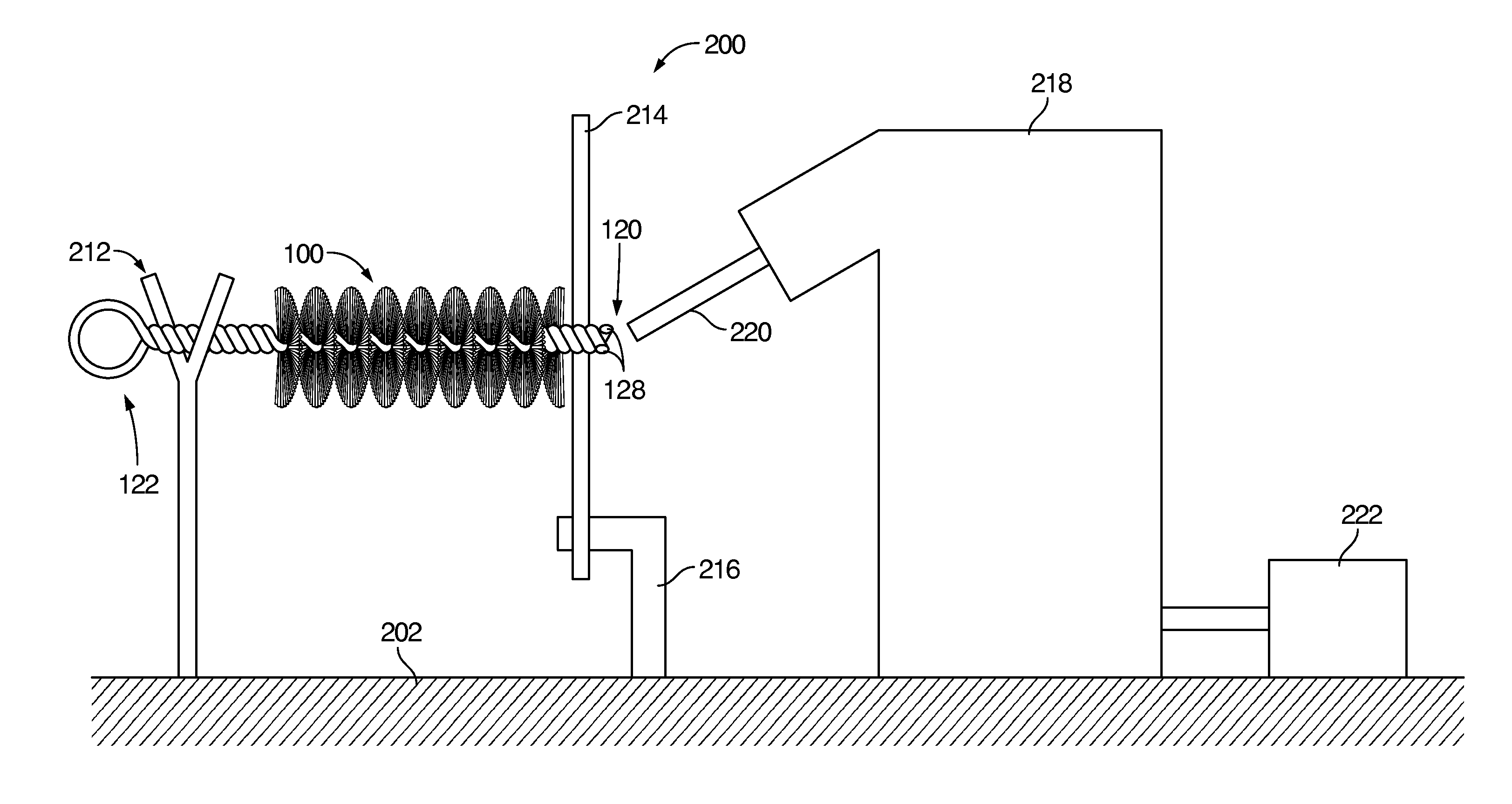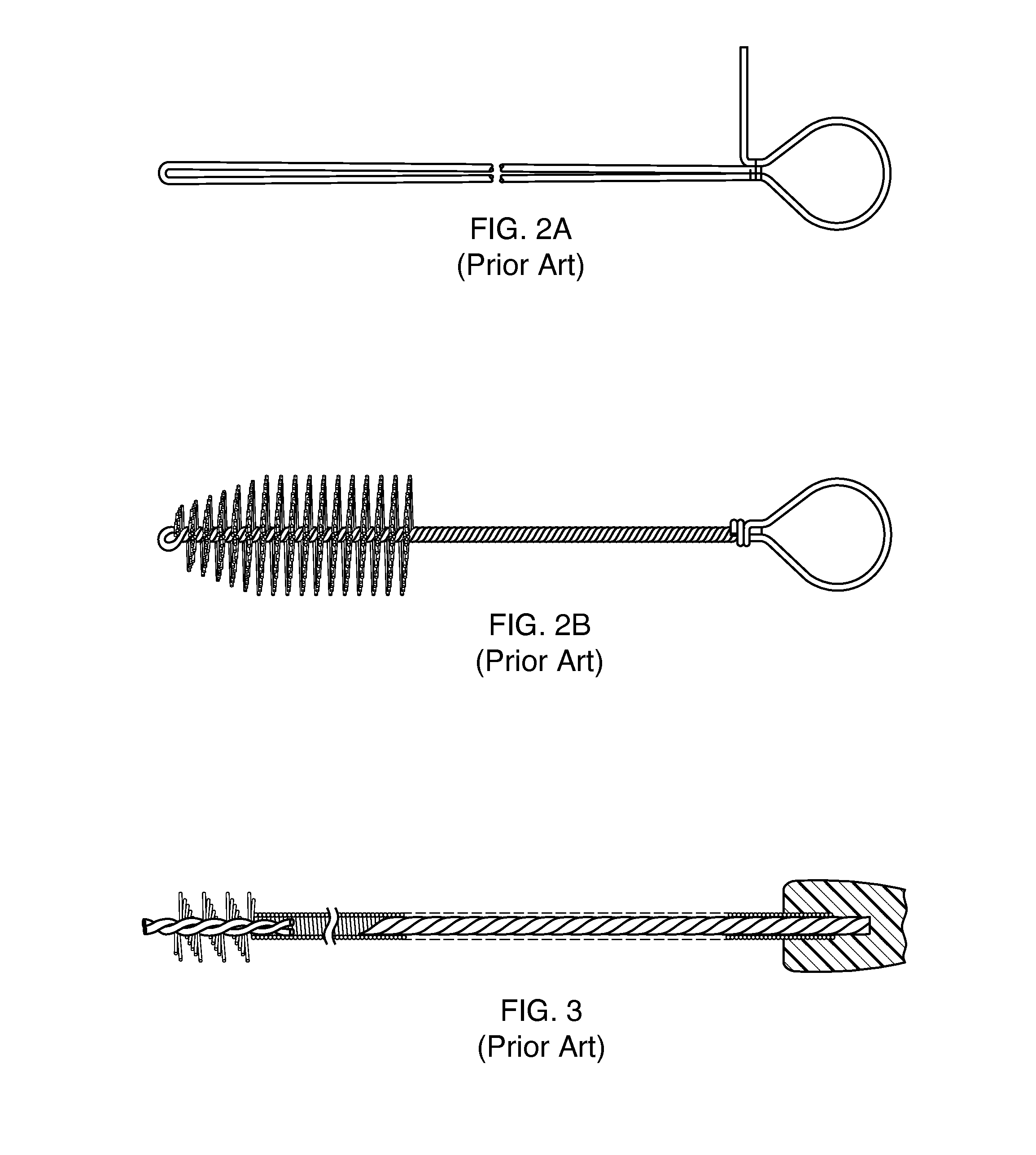Homogeneous core wire protective cleaning tip
a cleaning tip and core wire technology, applied in the field of mechanical abrasion cleaning technology, can solve the problems of high undesirable, rough, sharp and uneven surfaces, and high cost, and achieve the effects of preventing scratching or damage to sensitive and delicate interior surfaces, preventing unraveling of the core and bristles, and increasing the structural strength of the core wir
- Summary
- Abstract
- Description
- Claims
- Application Information
AI Technical Summary
Benefits of technology
Problems solved by technology
Method used
Image
Examples
Embodiment Construction
[0037]The present invention is directed to a cleaning device, more specifically a brush, having a protective tip that is less prone to scratch, scar or damage sensitive cleaning surfaces, and further to a method and apparatus for making the same. The brush is especially adapted to be used for cleaning the interior surfaces of vessels wherein an unfinished end of a brush may cause damage to such interior surfaces, such as in medical applications, for example, the cleaning of catheters, arthroscopic devices, cameras, etc., and for use in cleaning pistols, rifles and shotguns.
[0038]As discussed above, FIGS. 1A-3 show various configurations of prior art twisted in wire brushes at different points of the fabrication process. FIGS. 4A and 4B show two different configurations of twisted in wire brushes prior to forming the inventive protective tip, as discussed in detail below.
[0039]The brush may be fabricated in the customary manner by using a pliable metallic wire, reversibly folded back...
PUM
 Login to View More
Login to View More Abstract
Description
Claims
Application Information
 Login to View More
Login to View More - R&D
- Intellectual Property
- Life Sciences
- Materials
- Tech Scout
- Unparalleled Data Quality
- Higher Quality Content
- 60% Fewer Hallucinations
Browse by: Latest US Patents, China's latest patents, Technical Efficacy Thesaurus, Application Domain, Technology Topic, Popular Technical Reports.
© 2025 PatSnap. All rights reserved.Legal|Privacy policy|Modern Slavery Act Transparency Statement|Sitemap|About US| Contact US: help@patsnap.com



